- News
- Reviews
- Bikes
- Accessories
- Accessories - misc
- Computer mounts
- Bags
- Bar ends
- Bike bags & cases
- Bottle cages
- Bottles
- Cameras
- Car racks
- Child seats
- Computers
- Glasses
- GPS units
- Helmets
- Lights - front
- Lights - rear
- Lights - sets
- Locks
- Mirrors
- Mudguards
- Racks
- Pumps & CO2 inflators
- Puncture kits
- Reflectives
- Smart watches
- Stands and racks
- Trailers
- Clothing
- Components
- Bar tape & grips
- Bottom brackets
- Brake & gear cables
- Brake & STI levers
- Brake pads & spares
- Brakes
- Cassettes & freewheels
- Chains
- Chainsets & chainrings
- Derailleurs - front
- Derailleurs - rear
- Forks
- Gear levers & shifters
- Groupsets
- Handlebars & extensions
- Headsets
- Hubs
- Inner tubes
- Pedals
- Quick releases & skewers
- Saddles
- Seatposts
- Stems
- Wheels
- Tyres
- Health, fitness and nutrition
- Tools and workshop
- Miscellaneous
- Cross country mountain bikes
- Tubeless valves
- Buyers Guides
- Features
- Forum
- Recommends
- Podcast
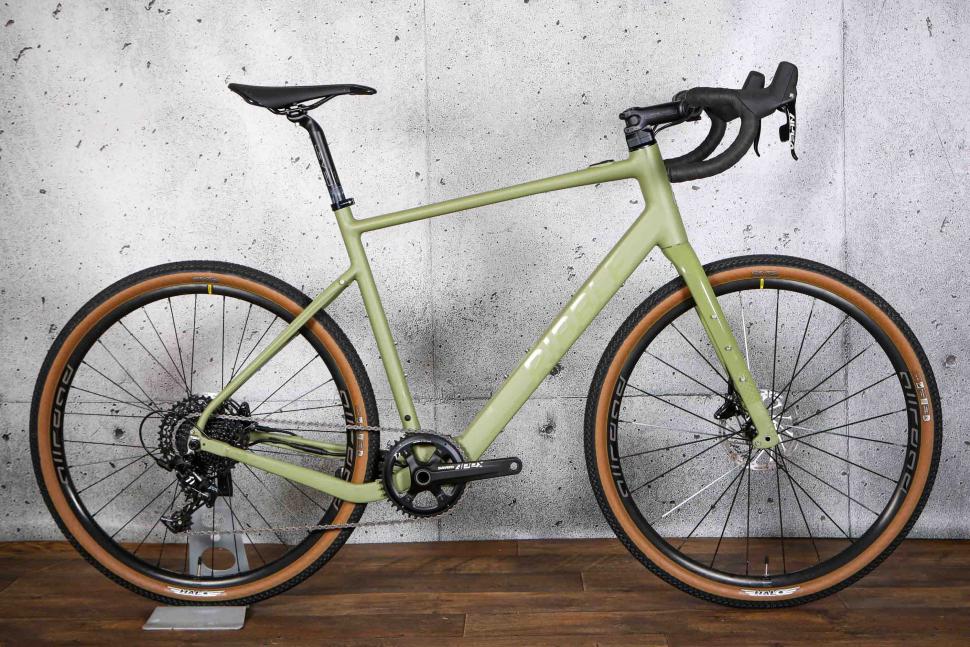 2022 Ribble Gravel ALe Sport SRAM Apex 1x.jpg
2022 Ribble Gravel ALe Sport SRAM Apex 1x.jpg£2,799.00
VERDICT:
Very good gravel all-rounder with a good motor system, at a tempting price
Well-balanced ride experience
Good value for money
Lots of mounts
Rear wheel removal tricky
Could do with a wider bar
iWoc button a faff off-road
Weight:
14,110g
Contact:
At road.cc every product is thoroughly tested for as long as it takes to get a proper insight into how well it works. Our reviewers are experienced cyclists that we trust to be objective. While we strive to ensure that opinions expressed are backed up by facts, reviews are by their nature an informed opinion, not a definitive verdict. We don't intentionally try to break anything (except locks) but we do try to look for weak points in any design. The overall score is not just an average of the other scores: it reflects both a product's function and value – with value determined by how a product compares with items of similar spec, quality, and price.
What the road.cc scores meanGood scores are more common than bad, because fortunately good products are more common than bad.
- Exceptional
- Excellent
- Very Good
- Good
- Quite good
- Average
- Not so good
- Poor
- Bad
- Appalling
Ribble's Gravel AL e is a solid buy, a well-specced and capable e-gravel bike that offers a composed ride and plenty of off-road capability. The motor system is well matched to the bike, and you're getting a lot of bike for your money.
For more gravel choices of the acoustic variety, have a read of our guide to the best gravel bikes, and for more e-bikes check out the reviews on our sister site ebiketips.
Ribble Gravel AL e: Ride
The Ribble Gravel AL e is a fun bike to ride both on and off the tarmac, with a motor system that assists rather than takes over, and it's capable enough to throw at some tricky terrain although it's definitely at its best blasting along more well-graded trails. It's a pretty composed ride overall, and does pretty well at hiding its 14.1kg weight for the majority of the time.
If you're looking at a gravel bike in the UK and you don't live in a remote hut in the Scottish highlands then you're not going to be using it exclusively for gravel, so it needs to be able to perform on the tarmac too. The Gravel AL e in the size reviewed has a stack-to-reach ratio of 1.48 which isn't especially upright; gravel bikes vary, but some are pushing towards (and past) 1.6. The Gravel AL e allows you to tuck in against the wind, especially because the bar, although flared, still has a reasonably deep drop, allowing you to get lower. On the road it's not far off the position of an endurance road bike, really.
At the front, the head tube angle gets steeper as you go up through the sizes, which isn't uncommon. Our bike's 72-degree head tube lends it a fairly responsive feel at the front and there's plenty of stiffness in the fork legs and head tube to get the bike going where you want it, although that's mitigated a bit by the big tyres. Chuck it down a steep tarmac descent and it'll still turn in to the apex but a big tyre with a bit of tread is always going to feel more vague than a slick. It's no slouch on the road, though, and on the flat it's easy enough to wind the Ribble up to the 25km/h motor cutoff point.
Overall, the response is spot on for a bike that you're most likely to ride along a paved road to some trails that aren't too gnarly. Once the terrain gets a bit more chunky – and especially when you're climbing steep, rocky stuff – you might find yourself wishing that the front end was a bit more relaxed so it tracks a line more efficiently, but for the vast majority of the riding a bike like this is likely to do it's pitched just about right.
It's a similar story at the back: fairly long (435mm) chainstays add stability and composure to the ride in most circumstances but make the bike feel a bit long underneath you when things are really tight and twisty. But you're more likely to find that a benefit than a deficit.
Ribble Gravel AL e: Motor power
Mahle's X35+ motor system is used on a lot of e-gravel bikes and for good reason: it's a reasonably simple system that works well and is configurable to your needs. A 250Wh Panasonic battery in the down tube controls a 40Nm rear hub motor, and the only physical control on the bike is the iWoc button in the top tube which acts both as a battery indicator and a system control.
Left to its own devices this will show you your battery state in a fairly sensible traffic-light-style progression (white > green > orange > red > flashing red), and when you press it it'll show you what mode you're in. A further press will toggle through the modes. The system is Bluetooth compatible and in the associated app you can adjust the motor response in the three modes to your liking.
I like the iWoc button on a road bike, but I have to say it's significantly less good off-road. There are too many times when you want to change mode but can't, because taking your hand off the bar to operate it is likely to plant you in a hedge. The gold standard of motor control on a gravel bike, for me, is the Giant Revolt E+ which has Di2 shifters and a single-ring drivetrain, and uses the redundant left shifter to control the motor. That's an expensive solution, but Mahle does offer satellite shifters for this system and I'd like to see them specced more than they are.
The motor itself is powerful enough to make a serious difference to your ride. It's not like a Bosch CX motor where you can basically do anything with zero effort – you'll need to add some power of your own – but it's certainly doing a fair bit of the heavy lifting. I pointed the Ribble at Old Midford Road, one of my harder local climbs, and it turned what's normally a bottom gear slog into a pretty straightforward ascent. Albeit still in bottom gear. Off road you have to be a bit judicious with the power when it's greasy out, to keep your rear wheel from spinning out, but on better graded and drier trails it's mostly just like being a lot fitter. Even in top assist mode the motor is reasonably quiet, and the overall experience is a lot like riding an acoustic bike more quickly than you normally would.
Hub motors and mid motors both have their pros and cons. The X35+ system's main plus points are that it's light and relatively cheap, so it's a great choice for a bike like this. The main downsides are that you're adding weight to the rear wheel, which can affect the handling and put you more at risk of grounding the rim off-road at lower tyre pressures, and it also makes the rear wheel harder to remove if you puncture. In Mahle's newer X20 system it's as simple as removing a thru-axle, but with the X35+ you still have to disconnect the power to the hub and remember to bring a spanner for the axle bolts.
Ribble Gravel AL e: Range
While 250Wh isn't an especially big battery, the X35+ motor isn't an especially powerful motor, and those two things cancel themselves out to a certain extent. The Gravel AL e has a decent range; you can go out for a few hours without worrying too much about whether you'll get home. I've done 200km on one charge on a bike using this motor, albeit on a road bike where you're spending more time above the assistance limit.
On the Ribble my default setting is green, the lowest of the three modes; that way you're getting a bit of help any time you're going slow enough to need it. On steeper hills, and especially when you're off-road, the higher two modes will get used a lot more. I've completed a 90km loop up on to Salisbury Plain and come home with 20% in reserve on this bike, being pretty judicious with the assistance but not sparing the boost mode when I needed it.
That ride is a good example of what bikes like this are especially good at, too: the ride out to the Plain is a bit of a slog on a gravel bike, and the assist takes some of the weight on the way there and back, with the result that you enjoy the middle gravelly bit more.
How far you'll actually go depends on, well, everything. The weather, the conditions, what modes you decide to use, how heavy you are... it's a usable range though, and there hasn't been a day ride I've decided was going to be too far.
If you're heading out on an epic, you could always sling the charger in a backpack and try to sneak a charge at a cafe along the way. That's made harder by the fact that the battery isn't removable, so your bike will need to be near the socket... not so easy if the cafe is rammed and your bike is covered in trail filth.
If you do manage to run the battery flat then at 14kg the Gravel AL e is a bike you can reasonably ride home without power. The motor doesn't really add any significant drag. It won't exactly be fun, but it's very achievable.
Ribble Gravel AL e: Build and spec
The Gravel AL e is built around a heat treated 6061-T6 Aluminium frame. It's neatly put together, and the paintjob, which is somewhere in the hinterland between olive and khaki, is neat and seems hardwearing. You can, of course, spec any colour you like through Ribble's custom shop, if you're prepared to pay. And wait.
The fork is an all-carbon affair with a tapered steerer, and you get a standard three-bolt mount on each side for cages or panniers.
There are mudguard mounts, too, front and rear, and rack mounts at the back, and three bottle cage mounts.
The only missing mount is a bento box one on the top tube, because the iWoc button is in the way.
The battery and button integration is neat, as it usually is with the Mahle system. It's not obviously an e-bike to look at.
Also integrated are the cables and hoses, running through the front of the spacer stack into the head tube. I have mixed feelings about this. Okay, it looks neat and it's potentially helpful if you're using a bar bag, but it introduces a lot of extra faff into servicing, and for a bike like this I'm not convinced it's necessary.
Our bike is the Sport spec, which is the cheapest build at £2,799, but not quite the build you'll get if you buy one today. The main change is the groupset: our bike is running SRAM Apex 1x11, whereas now you'll get Shimano GRX400 2x10.
There are pros and cons here: the lack of a front mech is a definite benefit if you're planning to head anywhere muddy because 1x systems shed much much more efficiently. On the other hand, the 2x10 groupset has a significantly wider gear range (470% versus 380%) and lower bottom gears, which will be a benefit if you're loading the bike up to head off for a night in a hedge. If you want a single-ring system now then usually the cheapest build would be the GRX810 bike at £3,499, although currently the GRX Di2 build is £900 off and comes in £100 cheaper, so that's obviously the pick.
The rest of the spec is mostly the same as the current list spec, although don't forget that Ribble's BikeBuilder allows you to swap out various bits of the build. There's a fair helping of Ribble's own-brand Level componentry, including the Level Gravel Riser, a 42cm flared bar that also incorporates a 20mm rise for a more upright position. It's a good all-purpose bar, although I found it a bit compact for more technical off-road stuff, where I prefer one with a wider and shallower drop, like the Ritchey VentureMax.
The Level 2 stem and Level 1 seatpost are both alloy and perfectly decent kit, and the Level cork tape is okay too, although for extra comfort and grip that's a place on the bike where a small spend can make a big difference. Check out our buyer's guide for some suggestions.
Mavic has partnered with Mahle to offer a motor version of its Allroad 650B Disc wheelset, and they're very solid all-rounders. I've been running a set of the 700C Allroads on my everyday bike for thousands of miles and they've been pretty hard to fault: they're strong and dependable, with a steel freehub body that doesn't get chewed up, and they're easy to set up tubeless.
The 19mm internal width is good for tyres up to and over what the Ribble's frame and fork will accommodate.
The stock tyre is currently a Panaracer GravelKing SK; our bike came with Halo GXC 650x47 tyres, which are great all-rounders unless it starts to get sloppy, where they lack a bit of bite. They're not dissimilar to the Panaracers that have been well reviewed on road.cc in the past.
Ribble Gravel AL e: Value and conclusion
At £2,799 for a well-specced and genuinely off-road-cable e-gravel bike, the Ribble is good value for money. Scott's Speedster Gravel eRide 50, for example, is £500 more for a very similar spec. GT's eGrade Bolt with a GRX groupset costs almost the same as the Ribble, Merida's eSilex 400 a bit more at £3,000. All those bikes have the same motor and essentially the same groupset.
Overall I've enjoyed riding the Gravel AL e. It's a well-considered e-gravel bike that you could bung some bags on and go on an adventure, or fit some mudguards to and use as a commuter, or pretty much anything in between. For the money, it's a solid buy if you want a bike that'll easily handle road and light trail riding, and the motor system works well as part of the package. It's not perfect – the motor needs a remote control option, and it deserves a wider bar for better control off road – but there's nothing that can't be addressed down the line if needs be.
Verdict
Very good gravel all-rounder with a good motor system, at a tempting price
road.cc test report
Make and model: Ribble Gravel AL e Sport
Size tested: Large, 585mm
About the bike
List the components used to build up the bike.
Frame - 6061-T6 Aluminium, Heat-Treated, Seamless Welds.
Forks - Gravel AL e, Full Carbon, Tapered, Carryall Mounts.
Groupset - SRAM Apex 1x
Wheels - Mavic Allroad 650b Disc, 12x100F/12x148R.
Tyres - Halo GXC, 650bx47mm, Tan Wall.
Headset - LEVEL 56, Semi-Integrated, Black.
Bars - LEVEL Gravel Riser Flared Alloy, 420/510mm.
Stem - LEVEL 2 3D-Forged Alloy, Black, 31.8mm.
Bar Tape - LEVEL Cork Ribbon, Black.
Seatpost - LEVEL 1 6061 Alloy, 27.2mm, 350mm.
Saddle - Prologo Kappa RS, Unisex, Black.
Motor - MAHLE SmartBike Systems X35+, M1, 250W.
Battery - Panasonic i250 36V/250Wh 18650GA-10S/2P.
Control Button - Top Tube Mounted MAHLE iWoc One.
Charger - MAHLE X35, with UK Power Cable.
Tell us what the bike is for and who it's aimed at. What do the manufacturers say about it? How does that compare to your own feelings about the bike?
From Ribble:
THE POWER TO EXPLORE
The Gravel AL e is a lightweight electric gravel bike that looks, rides, and feels just like a non-powered gravel bike. With the extra power of the X35+ motor when you need it most, you can explore further into the forest, conquer the toughest mountains or seek out your next off-road adventure. Extend your rides further, blitz through trails faster, and experience the freedom to do what you love most, exploring the paths yet to be discovered.
RIDE FURTHER, RIDE ELECTRIC
With its powerful motor system, huge tyre clearance and off-road ready components, the Gravel AL e was created to make gravel adventures more accessible. Its comfortable off-road focused geometry and plentiful luggage capacity ensures that the Gravel AL e's versatility extends to weekends of fun-filled off-road exploration. With the option to add a range extender you can effectively increase the available range by up to 70%, allowing you to ride further and faster than you ever thought possible
SMOOTH ELECTRIC ASSISTANCE
A sleek and lightweight MAHLE SmartBike Systems X35+ hub drive motor and a Panasonic 250Wh battery hidden within the frames downtube provides up to 250W of assistance to each pedal stroke, all at the press of a button. The extra assistance feels as natural as a non-powered gravel bike and will help you effortlessly navigate the toughest off-road terrain or conquer any climb.
LONG & LOW GEOMETRY
Designed for off-road riding and conquering extreme gravel tracks, gravel optimised geometry offers a longer and lower frame for a more planted feel over technical terrain. An oversized 56mm semi-integrated headset allows for the cables to be routed internally for sleek, clean aesthetics and are combined with a shorter stem and gravel-specific flared handlebars to provide greater confidence and control with the added practicality of barbag clearance.
CARRYALL MOUNTS & LUGGAGE CAPACITY
Multiple frame mounts for even the most extreme of bike packing requirements. These include two sets of water bottle mounts inside the main triangle as well as mounts for a rear rack. Plus, there are 'carryall' mounts on the front fork that allow the attachment of oversize cages for items such as dry bags, ground mats and sleeping bags.
HUGE TYRE CLEARANCE
Whether you prefer your tyres wide and aggressive or narrow and fast, you can now have your cake and eat it. There's ample clearance for 650b x 48mm or 700c x 45mm tyres, and a wide selection of tyres with multiple tread patterns available in BikeBuilder, offering the perfect solution for all types of gravel terrain.
INTERNAL CABLE ROUTING
Internal cable routing offers sleek, clean looks and protects the cables from dirt and grime. This also extends to the possibility of upgrading to an internally routed dropper post to make the ride as wild as you like and compatible with Shimano Di2 electronic gearing.
Where does this model sit in the range? Tell us briefly about the cheaper options and the more expensive options
Our test bike's SRAM Apex 1x build isn't currently available, but the Shimano GRX RX400 is the same price, and builds go up to £4,299 for GRX Di2.
Frame and fork
Overall rating for frame and fork
8/10
Tell us about the build quality and finish of the frame and fork?
Nicel put together and motor nicely integrated.
Tell us about the materials used in the frame and fork?
Frame - 6061-T6 Aluminium, Heat-Treated, Seamless Welds.
Forks - Gravel AL e, Full Carbon, Tapered, Carryall Mounts.
Tell us about the geometry of the frame and fork?
Stack: 625mm
Reach:412mm
Head angle: 72°
Seat angle: 73°
Wheelbase: 1075mm
How was the bike in terms of height and reach? How did it compare to other bikes of the same stated size?
Felt like the numbers suggested it would – not far off the position of an endurance road bike, really.
Riding the bike
Was the bike comfortable to ride? Tell us how you felt about the ride quality.
Ride quality is good. Frame platform is fairly stiff, but that's mitigated by big tyres and fairly flexible seatpost. Bar/tape pretty good too.
Did the bike feel stiff in the right places? Did any part of the bike feel too stiff or too flexible?
A good balance overall.
How did the bike transfer power? Did it feel efficient?
Almost like you're getting more out than you put in 
Was there any toe-clip overlap with the front wheel? If so was it a problem?
None that was an issue.
How would you describe the steering? Was it lively neutral or unresponsive? Just on the lively side of neutral.
Tell us some more about the handling. How did the bike feel overall? Did it do particular things well or badly?
Well pitched for a mix of road riding and light trails. Could do with being slacker for more technical stuff.
Which components had the most effect (good or bad) on the bike's comfort? would you recommend any changes?
Tyres and seatpost add extra comfort.
Which components had the most effect (good or bad) on the bike's stiffness? would you recommend any changes?
No changes needed.
Rate the bike for efficiency of power transfer:
10/10
Better than 10!
Rate the bike for acceleration:
8/10
Rate the bike for sprinting:
4/10
Not really a sprinter's bike.
Rate the bike for high speed stability:
9/10
Lots of mass and big tyres to keep you upright.
Rate the bike for cruising speed stability:
9/10
Rate the bike for low speed stability:
7/10
Steering can start to get just a bit twitchy.
Rate the bike for flat cornering:
8/10
Rate the bike for cornering on descents:
7/10
At speed the big tyres aren't as keen to turn in.
Rate the bike for climbing:
10/10
Especially on tarmac and light gravel.
The drivetrain
Rate the drivetrain for performance:
8/10
Rate the drivetrain for durability:
7/10
Rate the drivetrain for weight:
7/10
Rate the drivetrain for value:
7/10
Tell us some more about the drivetrain. Anything you particularly did or didn't like? Any components which didn't work well together?
Our test bike came with SRAM Apex 1x, but the current standard spec is Shimano GRX400.
Wheels and tyres
Rate the wheels for performance:
8/10
Mavic Allroad Discs are very dependable.
Rate the wheels for durability:
8/10
Rate the wheels for weight:
6/10
Rate the wheels for comfort:
8/10
Rate the wheels for value:
7/10
Rate the tyres for performance:
7/10
Good all-rounders, especially on drier tarmac and gravel.
Rate the tyres for durability:
8/10
Rate the tyres for weight:
7/10
Rate the tyres for comfort:
9/10
Rate the tyres for value:
8/10
Tell us some more about the tyres. Did they work well in the conditions you encountered? Would you change the tyres? If so what for?
Again, standard spec is Panaracer GravelKing SKs, so I'm not basing the review score on these.
Controls
Rate the controls for performance:
8/10
Bar is comfy but could be wider.
Rate the controls for durability:
8/10
Rate the controls for weight:
6/10
Rate the controls for comfort:
8/10
Rate the controls for value:
7/10
Tell us some more about the controls. Any particularly good or bad components? How would the controls work for larger or smaller riders?
Gravel bar is a nice shape and tape is comfy, but bar could be wider. Seatpost and stem are good own-brand stuff.
Your summary
Did you enjoy riding the bike? Yes
Would you consider buying the bike? Yes
Would you recommend the bike to a friend? Yes
How does the price compare to that of similar bikes in the market, including ones recently tested on road.cc?
For the current GRX400 build, it's about the cheapest of the comparable bikes.
Rate the bike overall for performance:
8/10
Rate the bike overall for value:
7/10
Use this box to explain your overall score
Overall: very good. You're getting a lot of bike for your money, and it's a well-considered build and geometry for the kind of work it'll do. A solid buy for many different kinds of riding.
About the tester
Age: 50
I usually ride: whatever I'm testing... My best bike is: Kinesis Tripster ATR, Merida Scultura, Dward Design fixed
I've been riding for: Over 20 years I ride: Every day I would class myself as: Expert
I regularly do the following types of riding: road racing, commuting, touring, club rides, general fitness riding, fixed/singlespeed, Mountain Bike Bog Snorkelling, track
Dave is a founding father of road.cc, having previously worked on Cycling Plus and What Mountain Bike magazines back in the day. He also writes about e-bikes for our sister publication ebiketips. He's won three mountain bike bog snorkelling World Championships, and races at the back of the third cats.
Latest Comments
- imajez 1 hour 8 min ago
'Ingenious' ?!? ...
- eburtthebike 1 hour 12 min ago
Sorry, but the BBC is definitely tilting towards cycling after the Panorama debacle....
- mdavidford 1 hour 18 min ago
Unlikely. Not once he hears that it'll 'help Gore'.
- bikeman01 1 hour 30 min ago
Indeed I did. I can only assume the Mr Onion allowed himself to be interviewed and dropped himself in it by not accepting the caution. A caution...
- Hirsute 1 hour 41 min ago
Remember your hiplock D1000 is only as good as the street furniture it is attached to.
- Hirsute 1 hour 44 min ago
I feel this person's problems may be a little more deep seated than not wanting to pay ulez (although their car is exempt).
- chrisonabike 1 hour 41 min ago
Now very old news, but it still just doesn't take....
- Destroyer666 1 hour 54 min ago
I am not sold on this - As mentioned, Sram has ok'd e.g. Pedro's chain checker which is more like a traditional tool. And those you can fit and get...
- chrisonabike 3 hours 21 min ago
Kei vehicles here. Europe already has microcars of course (in fact there's at least one place in the US where they have quite a few really micro...
- wtjs 5 hours 19 min ago
Let's hope that it makes other drivers think twice before attacking cyclists...
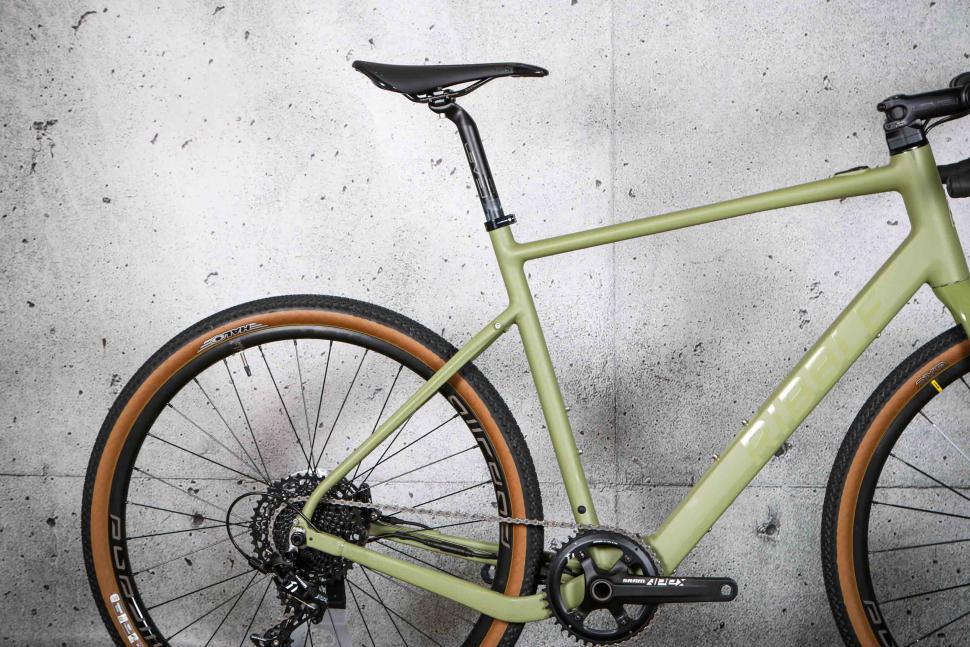









































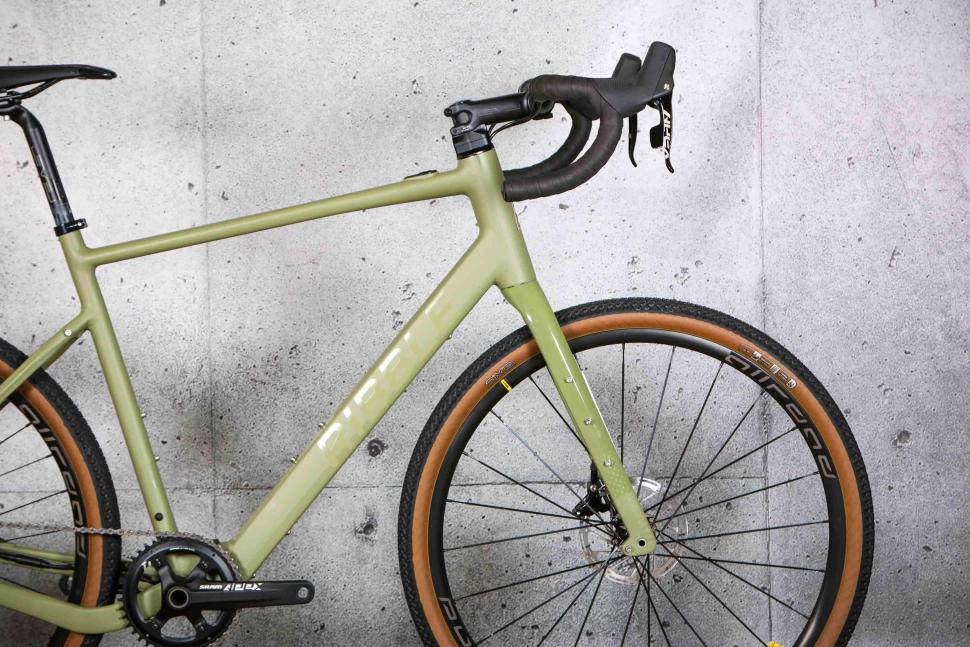








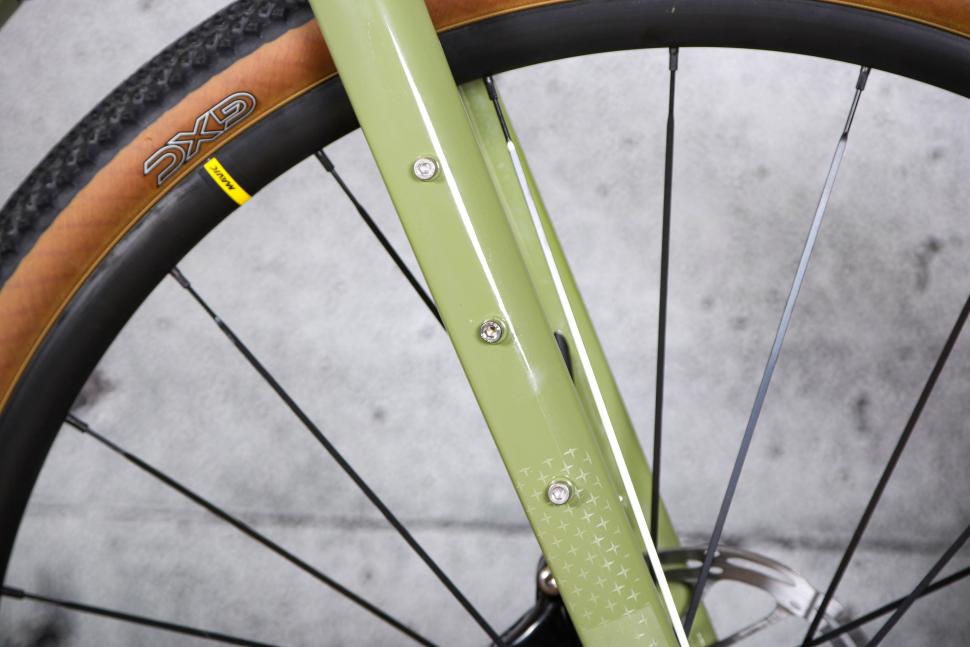

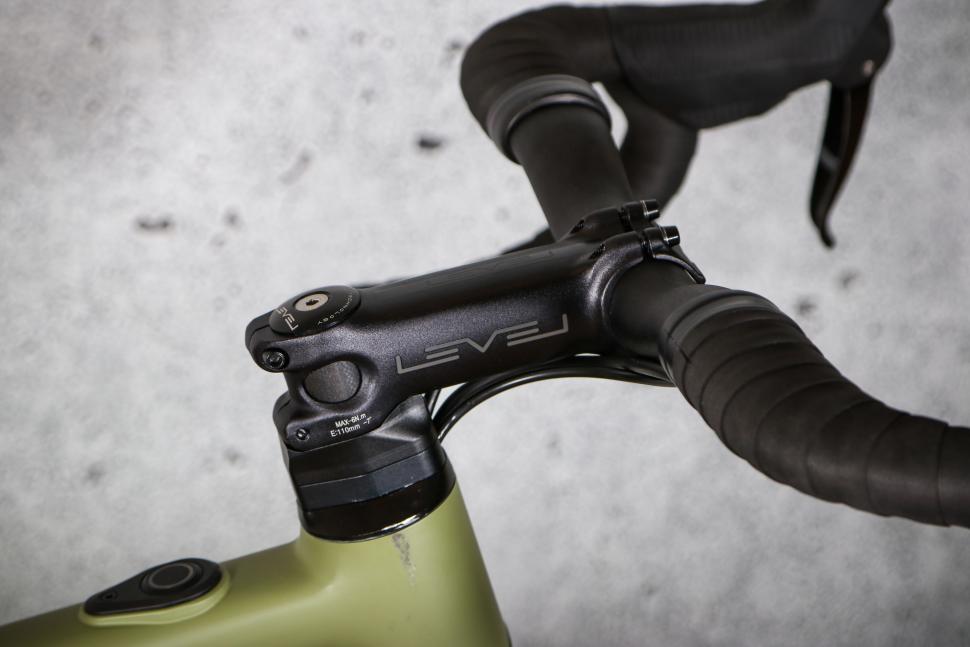



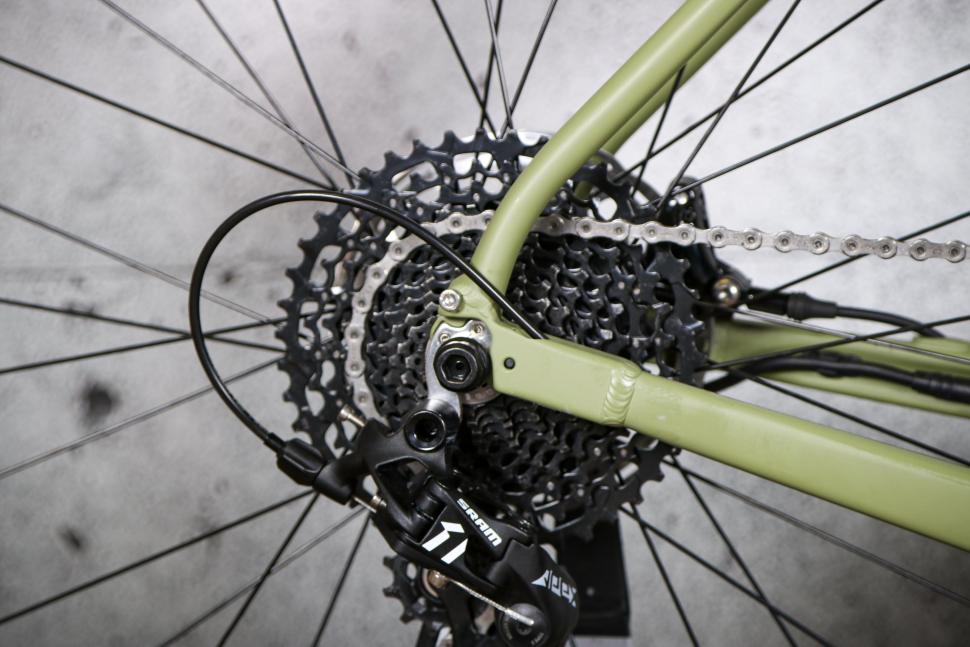
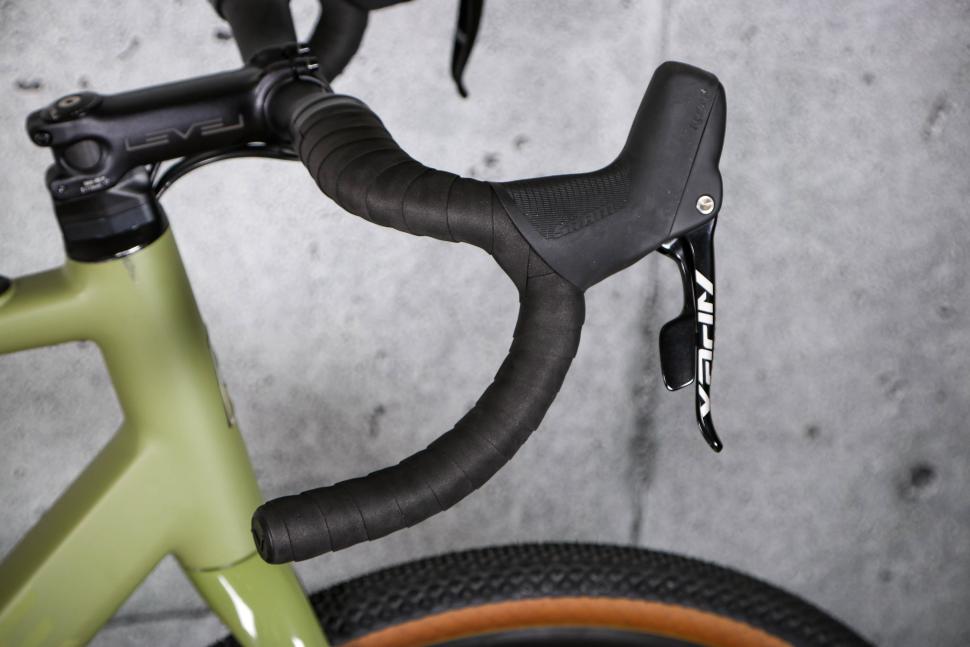

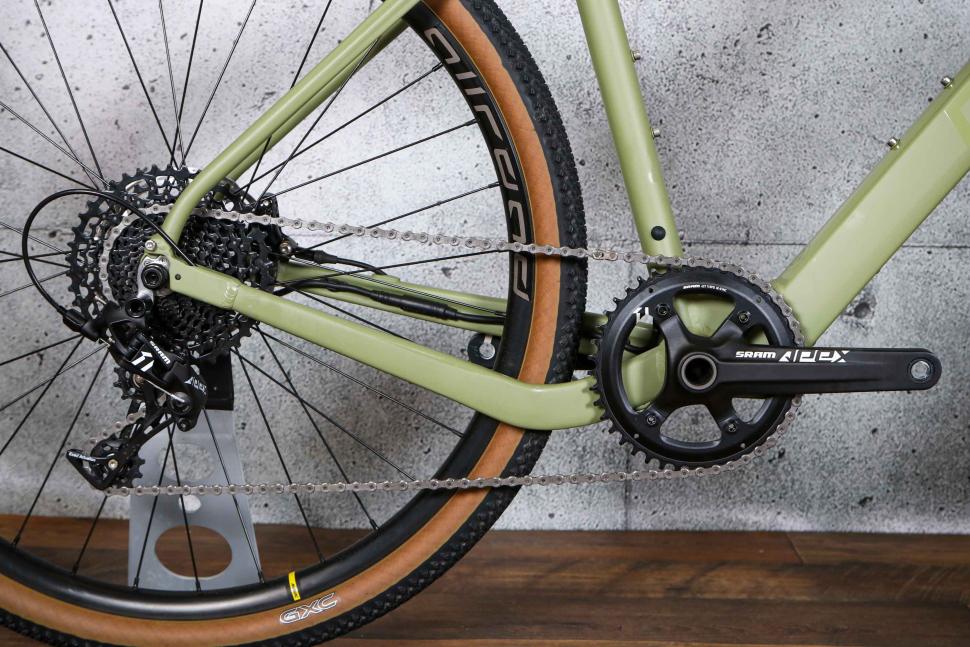

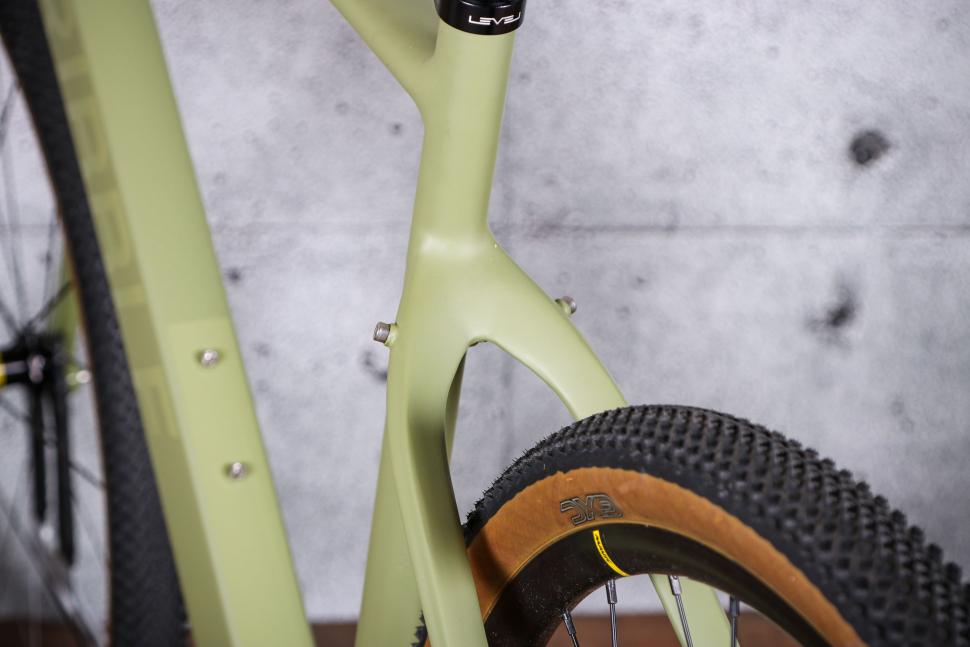
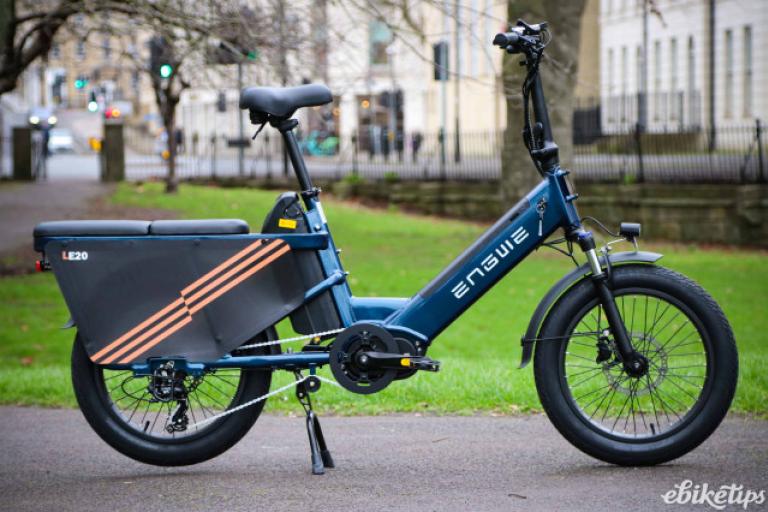
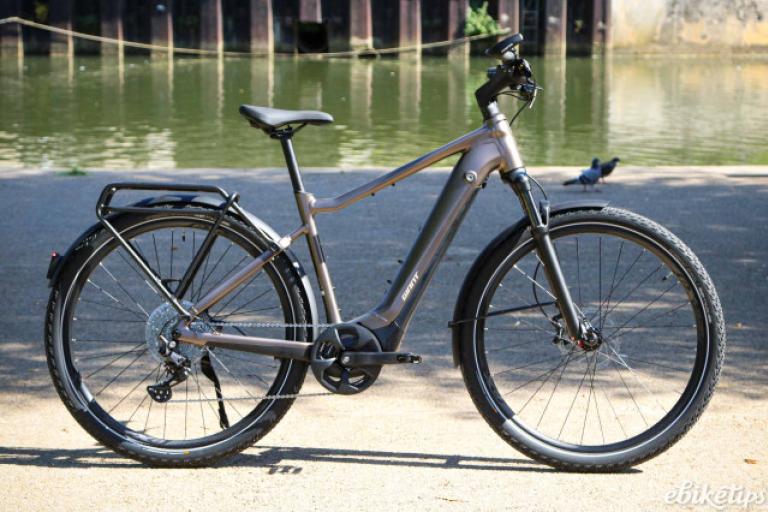
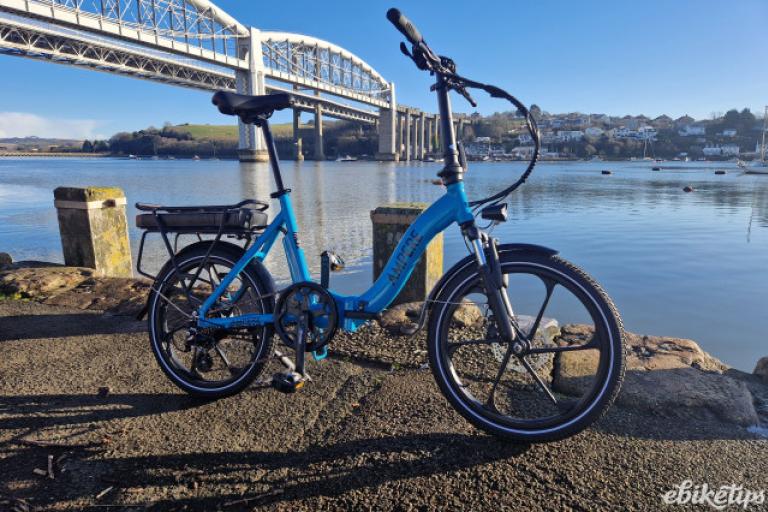
Add new comment
3 comments
"neatly put together"? Looks like a few bits of RHS that I welded myself!
I've had mine for just over a year, now, and absolutely love it.
I opted for the GRX400 2x10, for the wider, more closely spaced gears, as bikepacking was my expected use.
I managed the first day of the Dorset Dirt Dash (a quite hilly 50 miles of off-road goodness) with 68% charge left, making Charlie the Bikemonger scratch his head and go back to the beer van.
My only advice to any potential buyers is to add frame protection to the bottom of the drive side chainstay as wee as the top, as the dropped chainstay is far more susceptable to chain slap that my previous bikes, which have traditional chainstays.
Looking forward to many more adventures.
Seems like the perfect commuter to me. And at 14kg you can perfectly cycle home with a fully drained battery.
It seems crazy to me that non e-assisted, non carbon bikes are sometimes sold at more than the double prize of this Ribble.